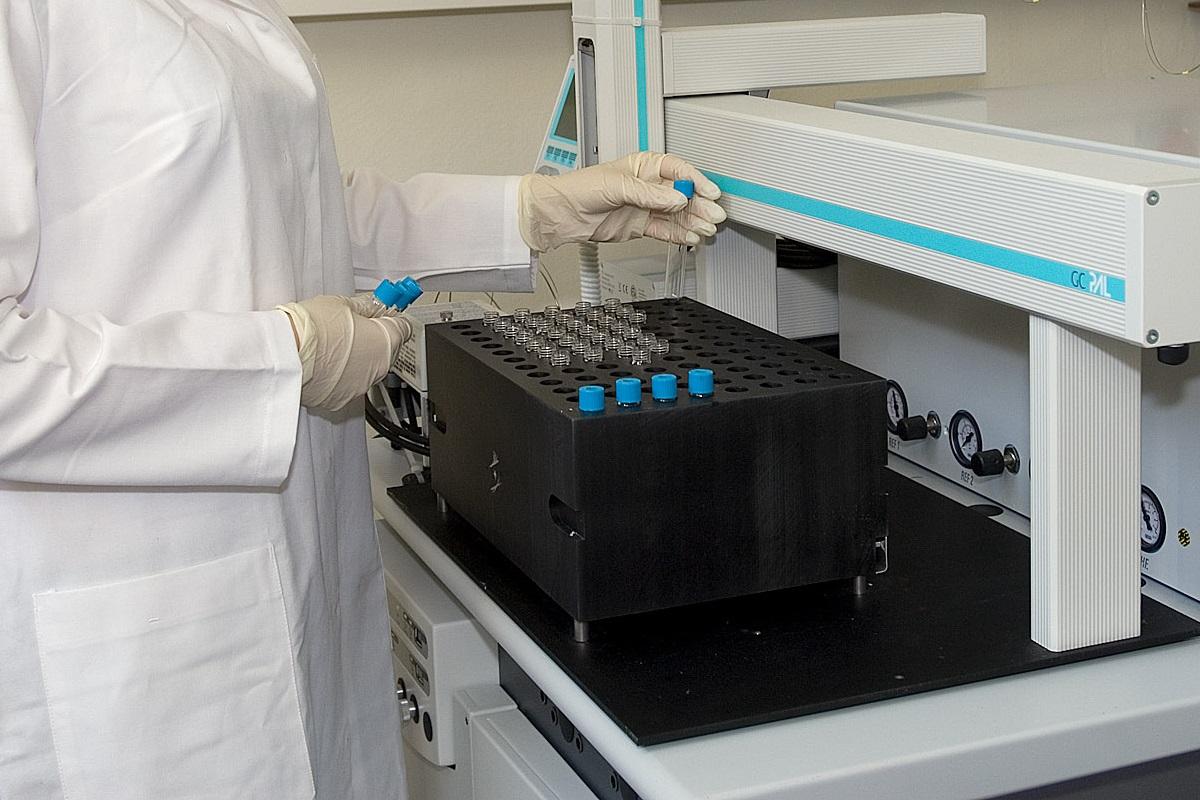In the isotope laboratory of the Museum für Naturkunde Berlin stable isotopes of carbon, nitrogen, oxygen and hydrogen are analysed. Isotopes are types of atoms of one element whose nuclei contain different numbers of neutrons. In stable isotope investigations, the different masses are used to determine the ratio of the isotopes in sample material. The isotopic composition of the sample allows conclusions about, for instance, the prevailing temperature and precipitation regime when the material was formed. In addition to palaeoclimatology, stable isotopes are also utilized in geological, biological and archaeological research. Applications range from forensics to hydrogeology. The laboratory at the Museum für Naturkunde therefore cooperates with a large network of partners in Berlin and throughout Germany.
Methodology:
- Analysis of stable isotopes
- Mass spectrometry
- Cavity ring down spectroscopy
Equipment:
Three Thermo Isotope Ratio Mass Spectrometers, two Delta V and one Delta Plus
For the determination of isotope ratios
Two EA-1112 CHN analyzers from Thermo, coupled to the IRMS with two CONFLO-IV interfaces
For the analysis of samples of organic matter in sediments or biomass
Two Thermo Finnigan GASBENCH II
For the analysis of carbon and oxygen isotope ratios in carbonate and liquid samples
Cavity Ring Down Spectroscope from PICARRO Model L1102-i with PAL Autosampler
For the isotope analysis of hydrogen and oxygen in water samples
Applications:
- Jahnke, Christoph, Manal Wannous, Uwe Troeger, Marianne Falk, Ulrich Struck (2019) Impact of seawater intrusion and disposal of desalinization brines on groundwater quality in El Gouna Egypt, Red Sea Area. Process analyses by means of chemical and isotopic signatures. Applied Geochemistry, 100: 64-76.
- Wang, D., Hong-Fei Ling, Ulrich Struck, Xiang-Kun Zhu, Maoyan Zhu, Tianchen He, Ben Yang, Antonia Gamper & Graham A. Shields (2018) Coupling of ocean redox and animal evolution during the Ediacaran-Cambrian transition. Nature Communications (2018) 9:2575 |DOI: 10.1038/s41467-018-04980-5.
- Gerhard Franz, Vladimir Khomenko, Aleksei Vishnyevskyy, Richard Wirth, Ulrich Struck, Jörg Nissen, Ulrich Gernert, Alexander Rocholl (2017) Organic matter and formation of buddingtonite - an example of organic-igneous interaction from the Paleoproterozoic Volyn pegmatite, Ukraine. American Mineralogist 102:1-17
